How sleeping in old schools is reviving rural Japan
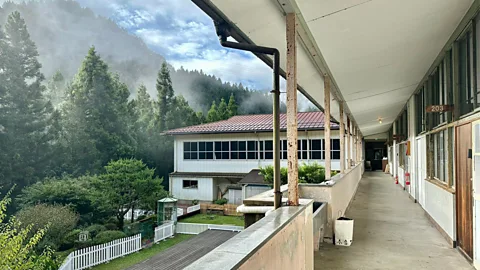 Hare to Ke
Hare to KeAs Japan's dwindling population increasingly migrates to cities, 450 rural schools close each year. Now, some are being transformed into unique inns.
The morning sun filters through tall windows, illuminating rows of wooden desks where students once recited kanji writing symbols. But instead of attracting boisterous children, this classroom now lures travellers in search of deep relaxation and a unique immersion in rural Japanese culture.
This is Hare to Ke, a former elementary school-turned-guesthouse nestled in the mountains of Miyoshi on Shikoku, the smallest of Japan's four main islands.
Hare to Ke occupies the former Deai Elementary School, which closed in 2005 after student numbers fell to just five. According to a local newspaper, in its heyday in 1945, the school had more than 500 pupils, but like many rural schools across Japan, it gradually emptied out as families have increasingly migrated to cities. After eight years standing vacant, the school was officially decommissioned in 2013.
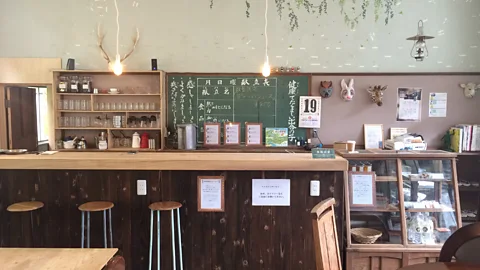 Hare to Ke
Hare to KeToday, Miyoshi's population has declined from a peak of 77,779 in 1955 to around 20,000, and more than 40% of its residents are aged 65 or older. In the decades following Japan's postwar economic boom, the decline of local industries and a steady exodus of young people left Miyoshi with an aging population and abandoned infrastructure. By 2012, Miyoshi had 28 unused schools, and local officials began actively seeking proposals to repurpose them.
But Tokyo-based designer Shuko Uemoto had an idea. Uemoto first visited Miyoshi in 2014 with her then-two-year-old son and was struck by the quiet beauty of the place. "The water and air here are completely different," Uemoto told the BBC. "When we stayed here for the first time, my son's asthma symptoms just disappeared. That moment really stayed with me."
"I remember thinking, if my child grew up surrounded by this kind of nature, how would that shape him? I got really excited by the idea," she said. When she came across Miyoshi's call for revitalisation proposals, she returned to tour several of the area's other empty educational centres. The moment she stepped into Deai Elementary School's quiet courtyard, she knew she had found something special.
"The sound of the river, the sunlight, the silence, it all felt full of potential," she said. Uemoto relocated from Tokyo, submitted a detailed three-year business plan and launched what would become Hare to Ke with support from local officials and residents.
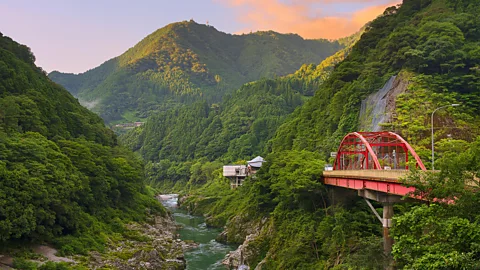 Alamy
Alamy"The school had been a local landmark, but it stood in darkness, closed off from the community. Now, the lights are back on, and people have regained a sense of emotional belonging. The fact that outsiders are now drawn here and find it appealing has helped locals regain their confidence. That, I think, is the greatest achievement," said Yuko Oka, an official from Miyoshi's Regional Revitalisation Division.
Today, 13 of Miyoshi's previously abandoned schools have been transformed into community cafes, satellite offices and guesthouses like Hare to Ke, which has become a model for how abandoned schools can breathe new life into Japan's many dwindling communities.
But will it be enough to avert the quiet crisis unfolding across Japan's countryside? As the country continues to grapple with a rapidly aging population and one of the world's lowest birth rates, it is losing nearly 900,000 residents each year. According to one estimate, more than 40% of Japan's municipalities could one day cease to exist. As younger generations increasingly trade rural areas for cities, roughly 450 schools close every year, according to Japan's Ministry of Education, Culture, Sports, Science and Technology (MEXT). In response, a growing number of these once-empty buildings are now being reimagined to revitalise Japan's depopulated regions.
At Hare to Ke, guests aren't just staying in a repurposed classroom, they're reconnecting with nature and themselves through rest and relaxation. The hotel's name nods to a traditional Japanese concept of time, with hare referring to special celebrations or festivals and ke denoting mundane, everyday life. Historically, the two existed in balance, but following Japan's postwar economic growth, many believe that distinction has faded, with everyday life becoming dominated by "hare"-like stimulation and abundance.
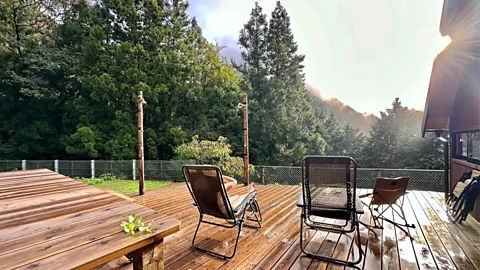 Hare to Ke
Hare to KeHare to Ke invites guests to rediscover that ancient rhythm through simplicity and stillness. By embracing slowness and sensory awareness, it encourages guests to return to the depth of "ke". Visitors are welcomed by the aroma of freshly brewed coffee, they can sip herbal tea, nap to the soundtrack of rustling trees and wake to crisp mountain air.
Plan your trip:
Hare to Ke Design Hostel is located a roughly 20-minute drive from Awa-Ikeda Station (JR Dosan Line), or approximately a 75-minute drive from Takamatsu Airport. Renting a car is recommended for ease of travel in this rural region. The property offers two distinct lodging options: the "standard plan" includes one night's stay, a handmade pizza dinner and access to the on-site sauna. Reservations can be made online here. The Sleep Trip option includes dinner from locally sourced ingredients and the same amenities as the standard plan, plus herbal infusions, aromatherapy and nature-based relaxation experiences. Booking can only be made by emailing [email protected].
Guest Chill Kouri, who discovered Hare to Ke by chance during a road trip through Shikoku with a friend, echoed this sense of unexpected restoration. "The drive into the mountains was winding and narrow, but when we arrived, I was amazed. The atmosphere was nostalgic but fresh, and everything from the old school building was thoughtfully preserved and run," Chill said. "It's not just a renovation; it's a place where the whole concept feels alive."
Inspired by its bucolic setting, the hotel recently launched a specialised programme focused on deeper sleep improvement. Guests are asked about what typically disrupts their sleep, and based on their answers, they receive a custom-blended medicinal herbal tea. The experience incorporates aromatherapy, and soothing sounds and scents – engaging all five senses to guide visitors into ideal rest.
The idea came after Umemoto relocated to Miyoshi and realised how deeply she slept. "I didn't expect to feel such a difference, but the air and the silence helped me rest more deeply than I had in years," she said. Recognising that many city dwellers rarely encounter true quiet or natural darkness, Uemoto saw an opportunity to create this "Sleep Trip" offering.
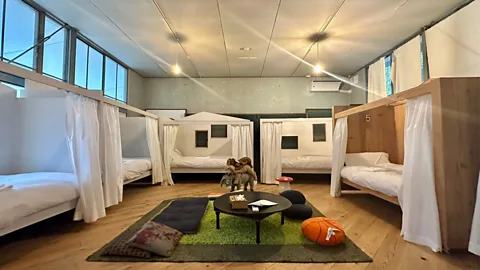 Hare to Ke
Hare to Ke"Many people struggle to sleep while travelling," Uemoto said. "But if you can sleep deeply, just for one night, it transforms the entire journey. I want guests to feel that. Surrounded by the mountain air, the cry of deer you can only hear if you stay overnight, the warmth from the sauna deep in your core, I hope people can truly relax here."
For more than 400 years, residents in the surrounding Nishi-Awa region have cultivated terraced fields on gradients as steep as 40 degrees, preserving not only agricultural practices but also the landscape and culture of these mountain communities. Guests who purchase the Sleep Trip option are served dinners featuring grains harvested from this challenging terrain, along with seasonal vegetables and locally sourced game meat.
More like this:
• The Japanese island that was saved by art
The design of Hare to Ke preserves the warmth and charm of the school's past. Along the outdoor walkway leading to the entrance, graduation murals painted by former students remain. Classrooms feature playful nods to the past: eye charts, flasks and chalkboards evoke a nostalgic feel. Outside, locals who once attended the school as children now gather on the old sports ground to play gateball as guests look on.
One of the former schoolhouse's highlights is the sauna, which has become a destination in itself. "You're wrapped in the aroma of herbs while gazing at the forest through the window," said guest Mari Azumi. "The sauna room is lined with warm cedar, and the mountain scenery unfolds quietly in front of you. After the heat, you plunge into a cold bath filled with spring water from the mountains – crisp, clean, and refreshing.
 Hare to Ke
Hare to Ke"Then comes the outdoor rest. You lie beneath the trees, and in that stillness, you begin to feel yourself blending into the landscape. It's extraordinary, unfamiliar, yet deeply nostalgic. Like returning to something we've long forgotten. Like returning to nature."
Other school stays across Japan
Akizuno Garten (Wakayama)
This former school was transformed by local residents into a rural retreat focused on community exchange. Guests can enjoy homemade food and take part in seasonal workshops. The site also includes a sweet-making studio and a museum on local mandarin orange farming.
Katakuri no Yado (Niigata)
Tucked deep in Akiyamago, one of Japan's designated "100 Hidden Villages", this mountain inn blends local cuisine, hot spring baths and art tourism. It draws hikers and visitors to the Echigo-Tsumari Art Triennale.
Moriumius (Miyagi)
A former school in the tsunami-affected town of Ogatsu has been reborn as a hands-on educational and family-friendly inn. Guests can try forest walks, sea urchin fishing and outdoor cooking in this community-led symbol of recovery.
According to Koji Kamizasa from Miyoshi's tourism office, "Hare to Ke is part of a broader story – one where rural Japan is reclaiming its future not through flashy tourism, but by creating intimate, grounding and genuinely local experiences."
For instance, the hotel offers seasonal cooking workshops where residents teach guests how to prepare food with locally grown ingredients. In addition, every second Sunday of the month, Miyoshi holds a night market where residents not only sell food, but also teach visitors about Awa Odori, Tokushima's iconic traditional dance. Guests interested in the region's storied past shouldn't miss the annual Mt Tsurugi Summer Festival (17 July), a sacred ritual believed to date back more than 900 years. Taking place at the 1,955m summit of the eponymous mountain, it features a dramatic procession in which white robe-clad residents carry a mikoshi (portable shrine) up the mountain's steep paths. Their rhythmic chants echo through the forest, accompanied by the sounds of flutes and drums.
As Miyoshi continues to grapple with depopulation, events like these where travellers can participate not only help preserve cultural identity, but also introduce visitors to the region's enduring traditions. Nearby attractions like the Iya Valley and its iconic Kazura vine bridge also attract nature lovers. Many travellers combine these highlights with a night at Hare to Ke, making it a base for both reflection and adventure.
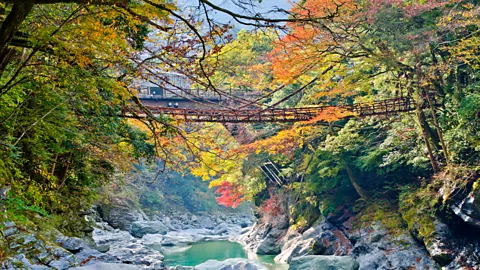 Getty Images
Getty ImagesFor many in the community, Hare to Ke is more than a guesthouse – it's a space where old memories resurface and new ones are made. "One day, an elderly woman in her 80s came with her niece," recalled Uemoto. "She opened an old graduation album and pointed to her younger self, saying, 'That's me!' She was so happy.
"Even the former principal has come back to visit," Uemoto added. "This school isn't just a building; it holds people's stories. That's why repurposing it wasn't a light responsibility. But I'm glad we've created a place they can return to."
--
If you liked this story, sign up for The Essential List newsletter – a handpicked selection of features, videos and can't-miss news, delivered to your inbox twice a week.
